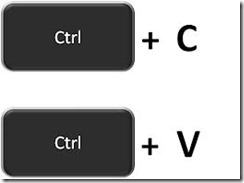Copied content indicates what really engages—and what drives users off-site
Social sharing buttons may be sexier, but according to research from user engagement platform Tynt, copy and paste is the sharing method of choice 82% of the time.
The service, which offers a way for content publishers to track sharing behavior through embedded code that indicates referrals and includes site URLs when content is pasted elsewhere, reported that in October 2012, 2% of all page views across its network involved a copy and paste.
Just over half of the content copied was then shared. This could be in an email, an instant message or another social channel. In addition, about one-quarter of copy-and-pastes resulted in a search—that is, a word or phrase from the content being viewed was copied into a search bar to look for more information on the topic.

For users, copying and pasting to share content holds obvious appeal: It’s almost frictionless, and it allows the sharer to choose exactly what to pass on to a friend or social network.
“You probably have a lot of friends sharing the same article,” Tynt general manager Greg Levitt said. “But when you can specifically call out a personalized, relevant aspect, it makes the story your own.”
On the search side of the equation, copy-and-paste analytics give publishers information about what content is actually driving users away from their sites.
Tynt also reported that while the vast majority of copied-and-pasted content is text, 12% of copied content was images.

Publishers know based on other types of sharing which pages are driving social engagement—but not necessarily why. When they can dig into the specific phrases and passages of text that readers want to pass on, it gives them a deeper window into what content users are really engaging with.
Story Source: www.emarketer.com
























Leave a Comment